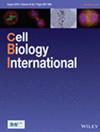Macrophage Protein Disulfide Isomerase Increases Infection by Leishmania amazonensis
Abstract
Leishmania spp. are protozoans with a digenetic life cycle responsible for causing tegumentary and visceral leishmaniasis. Leishmania (L.) amazonensis is the second most prevalent dermotropic species in Brazil. Infection in humans and other mammals takes place when phagocytes, mainly macrophages, uptake the parasite. Many proteins on the phagocytic cell surface participate in Leishmania phagocytosis. In this study, we evaluated the role of surface protein disulfide isomerase (PDI) in phagocytosis and infection of macrophages by L. amazonensis. PDI is the second most abundant chaperone in the endoplasmic reticulum. A unique study in the literature associated the presence of PDI on the macrophage surface with increased phagocytosis by Leishmania (L.) infantum (syn L. chagasi), the species most frequently associated with visceral leishmaniasis in the Americas. In the present work we evaluated L. amazonensis infections in transgenic FVB/NJ mice overexpressing PDI (TgPDIA1). We validated the presence of PDI on their macrophages surface by flow cytometry. We demonstrated that infection of macrophages pretreated with anti-PDI antibodies was lower compared to control cells. Accordingly, we showed that the overexpression of PDI increased the adhesion of parasites and infection of macrophages. We also demonstrated that macrophages overexpressing PDI internalize more zymosan particles. In vivo imaging of infections with luciferase-expressing parasites in wild-type and TgPDIA1 mice indicated that the overexpression of PDI was not associated with significant differences in footpad lesions and parasite burden, probably due to the ubiquitous overexpression of PDI and the roles of this molecule in other immune system functions.

 求助内容:
求助内容: 应助结果提醒方式:
应助结果提醒方式:


